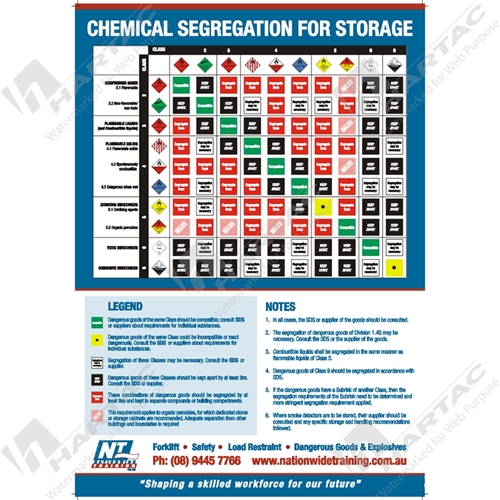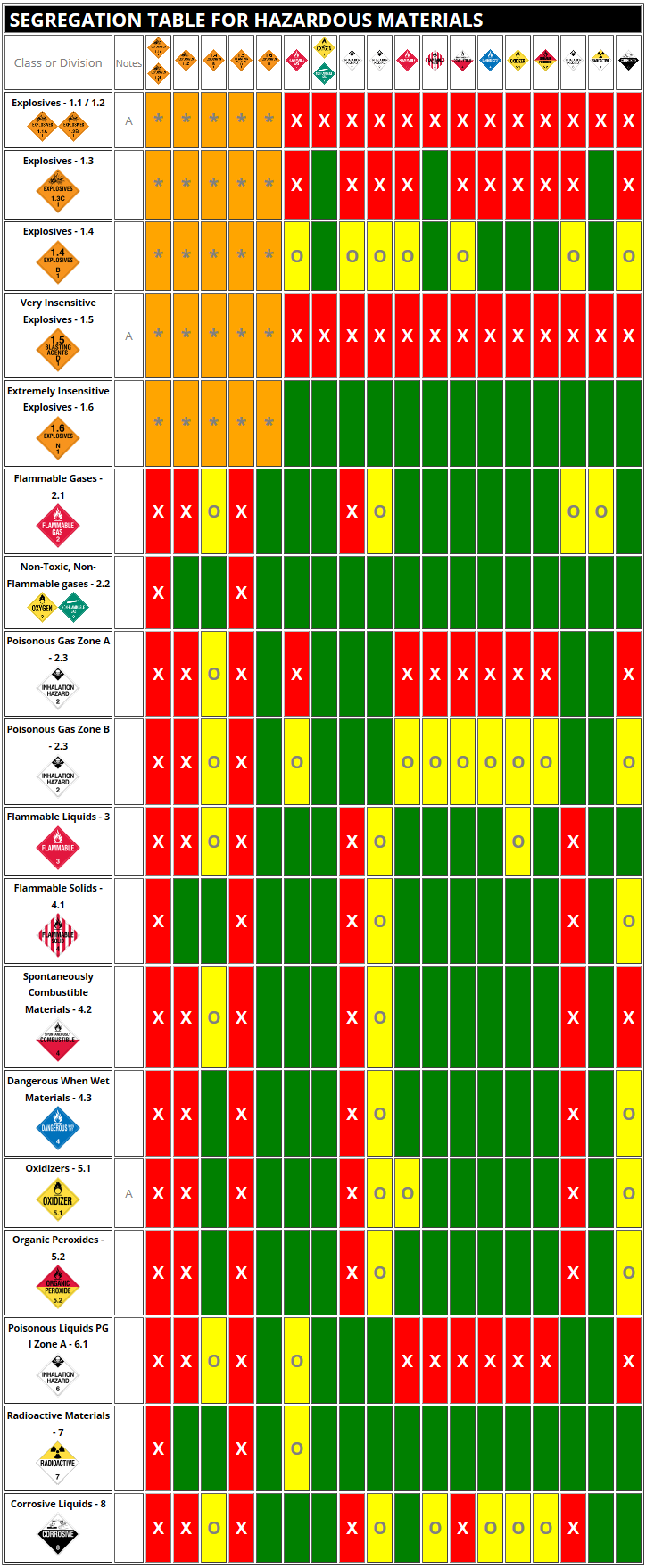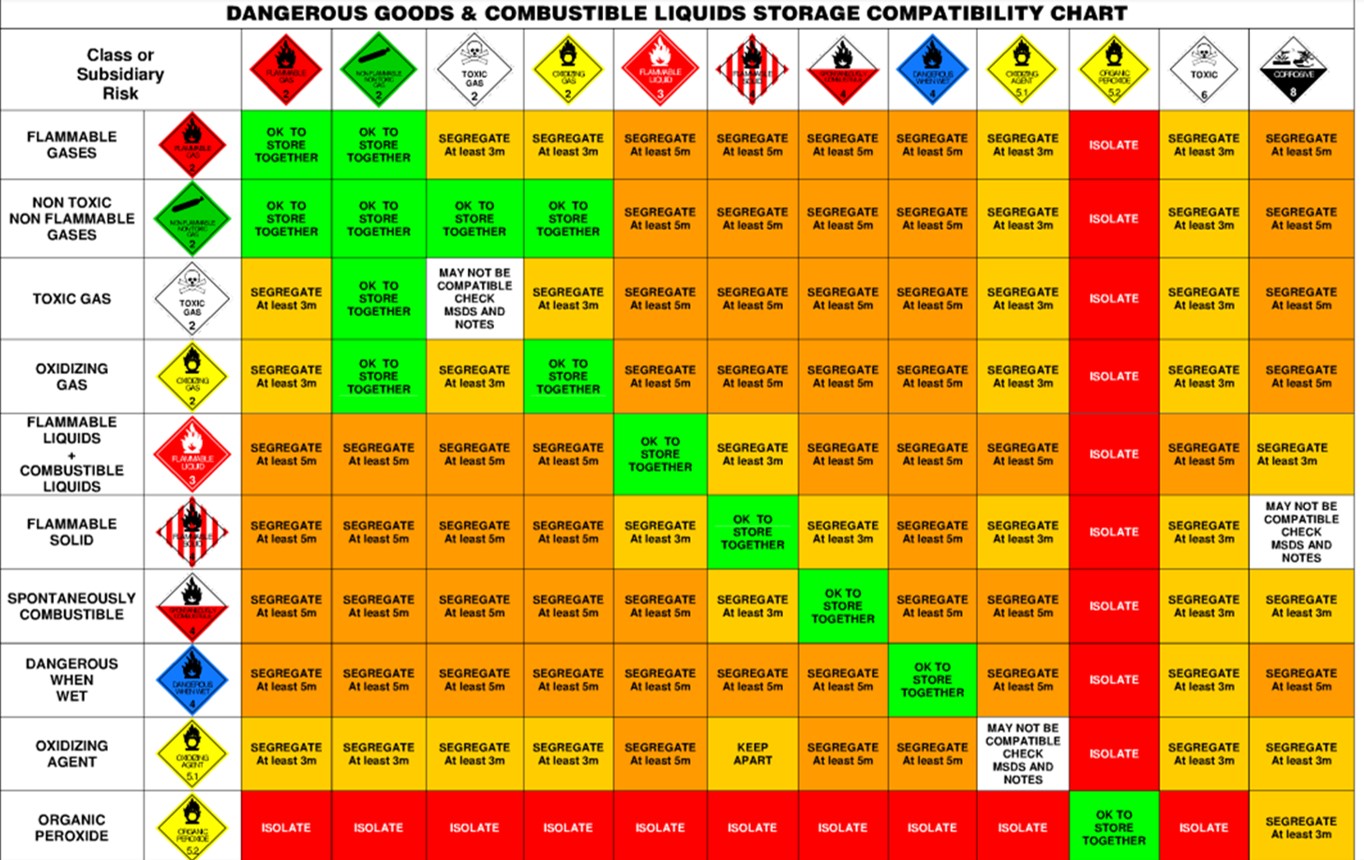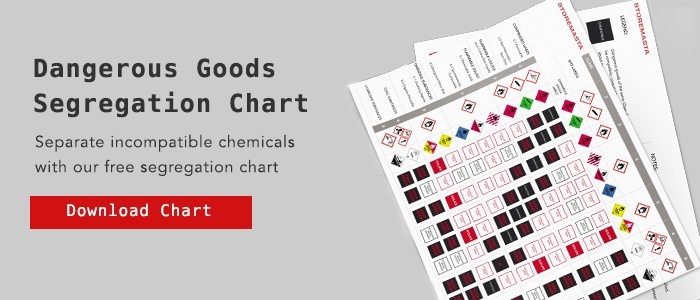2024 For the latest version of this document please go to. This requirement applies to organic peroxides for which dedicated stores or storage cabinets are recommended.

7 Types Of Plastic That You Need To Know Waste4change
Httpwwwmonasheduauohs DANGEROUS GOODS AND COMBUSTIBLE LIQUIDS SEGREGATION CHART.

Dangerous goods class 9 segregation chart. Consult the MSDS or the supplier of the goods. The following tables list the requirements under ASNZS 38332007 for the separation of and segregation within stores containing more than one class of dangerous goods in quantities exceeding those given for minor storage. All Hazard Labels MUST be taken into account for Segregation.
SPECIAL CARGO SEGREGATION CHART. May 2012 Date of Review. These combinations of dangerous goods should be segregated by at least 5m and kept in seperate compounds or building compartments.
21022012 726 Segregation between bulk materials possessing chemical hazards and dangerous goods in packaged form. Dangerous Goods classes not covered in this. Commonly transported class 9 dangerous goods include marine pollutants such as zinc oxide lithium ion batteries genetically modified organisms air bag modules and motor engines.
In certain jurisdictions workplace. For domestic transportation a Class 9 placard is not required. At the intersection of a row and a column indicates that packages containing these classesdivisions of dangerous goods do not require segretation_ 2.
Polymeric beads cotton bales excess packing materials. This dangerous goods segregation chart compares the compliance of Class 1 to 9 to various potential hazards in road vehicles and freight containers. A bulk packaging containing a Class 9 material must be marked with the identification number displayed on a Class 9 placard or an orange panel or a white square-on-point display configuration 172504f9.
The picture below shows hazard symbols for Class 9 dangerous goods. March 2021 Date of next review. Although only dangerous goods and combustible liquids feature in the compatibility chart care must also be taken to segregate oxidizers from those dangerous goods and other materials that are combustible in nature eg.
31082020 Download our FREE resource sheet for a DG Segregation Chart to help you safely store DGs on site. 3 Combustible liquids shall be segregated in the same manner as flammable liquids of Class 3. No applicable segregation restrictions in 177848.
Our extensive range of quality products will help you store contain and control and clean-up dangerous goods and hazardous. 727 Segregation of goods of class 1. 07012016 Class 9 Dangerous Goods Examples.
Dangerous Goods classes not covered in this guide are subject to different standards. 728 Reserved 729 Segregation for goods of class 7. 4 Dangerous goods of Class 9 should be segregated in accordance with MSDS.
Class 1 Articles bearing the Explosive labels shown above and falling into Divisions 11 12 14F 15 and 16 are normally forbidden. Chapter 722 Rules for Segregation of packages one must follow when consolidating various dangerous goods into a shipping container. The following tables list the requirements under ASNZS 38332007 for the separation of and segregation within stores containing more than one class of dangerous goods in quantities exceeding those given for minor storage.
DANGEROUS GOODS SEGREGATION AND STORAGE REQUIREMENTS This chart is designed to provide the user with practical guidance for the storage of dangerous goods. Class 9 Dangerous Goods Label. 5 If the dangerous goods have a Subrisk of another Class.
CLASS 1- EXPLOSIVE RCX REX RGXRXB RXC RXD RXE SRXSFla m ble g s. Division 41 and Classes 6 7. IMDG - Segregation Rules.
2 Toxic Gas 2. Any liquid other than a flammable liquid that has a flashpoint and that has a fire point less than its boiling point C1 Combustible liquid. Manager OHS Date of Issue.
Class 9 Miscellaneous dangerous goods and articles GOODS TOO DANGEROUS TO BE TRANSPORTED Goods listed in Appendix 5 of the ADG Code and goods determined to be so by an Authority ADG Code COMBUSTIBLE LIQUID. At Hazero our mission is zero hazards. Table 2 - For co-loading various IMO Class 1 compatibility groups into 1 container Exceptions Table 3 - Special Restrictions - IMO Class 1 cannot be loaded on the same vessel with these commodities.
It is not intended for use for minor quantities. 2 The segregation of dangerous goods of Division 14S may be necessary. These hazards include explosives flammables combustible toxic wet oxidising organic peroxide infectious radioactive and miscellaneous.
Chlorine and some other halogens are considered potent oxidizers even though their class and assigned with any oxidizing agent subsidiary risk under the dangerous goods. Table 1 - For co-loading various IMO classes into 1 container. 9 are not included in Table 93 A as they do not require segregation from any other class or div sion.
The segregation chart shows the dangerous goods class diamond and the equivalent pictogram adopted by Workplace Health and Safety legislation. SEGREGATE THESE CLASSES FROM THESE CLASSES - BY AT LEAST ONE METRE OR IN ACCORDANCE WITH ANY ADDITIONAL INSTRUCTIONS BELOW. Dangerous Goods and Combustible Liquids Segregation Chart v23 Responsible Officer.
Class or Subsidiary Risk. For more information on what DGs are read our helpful editorial here. Creating safer working environments.
Class 2 Class 3 Class 4 Class 5 Class 6 Class 7 Class 8 Class 9 Handling Labels Emergency chart IMMEDIATELY NOTIFY SUPERVISOR and implement local company emergency procedures. Classesdivision of dangerous goods must be segregated. These requirements do not apply to minor storage or retail storage.
Https Www Tmr Qld Gov Au Media Projects T Townsville Ring Road Section 4 Compliance Management Toolbox Sign On 20160810v2 Pdf La En

Hazardous Materials Segregation Table From Labelmaster

Truck Placarding Chart Labelmaster

Chemical Storage Chemicals Management Guide Training For Manufacturers 1

Chemical Information Panel Signs Chemical Segregation For Storage Poster 420 595mm Company Name Hartac Australia

Combined Hazardous Material Load Segregation Chart 40 X 26
Dangerous Cargo Handling Safe Procedure For Container Ships

Compatibility Of Class 3 Flammable Liquids With Other Classes Of Dangerous Goods

0 comments:
Post a Comment